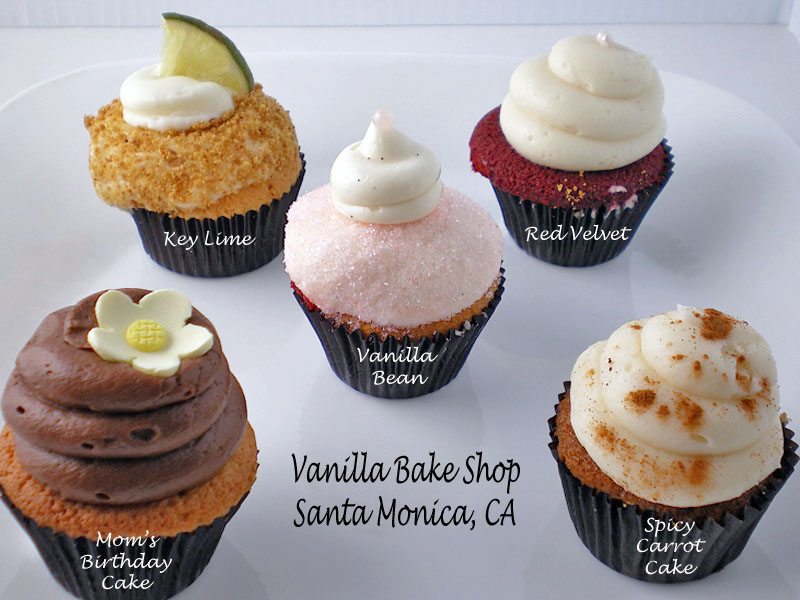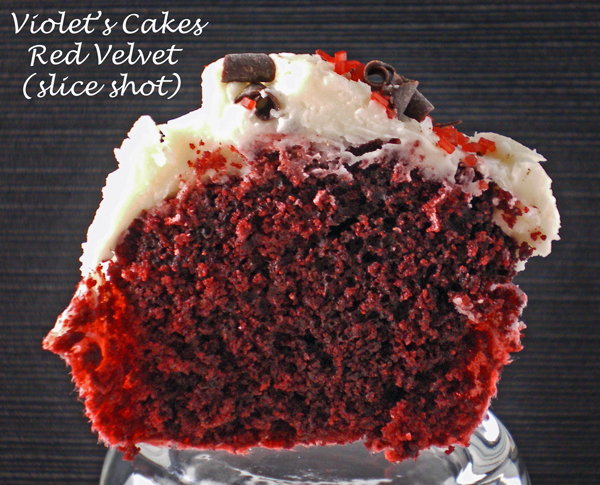Blogger The Repressed Pastry Chef is going on a taste testing tour of LA cupcake bakeries. Follow her progress on her blog and on Flickr. Her reviews are utterly hilarious, whether she's praising or slamming a given bakery, such as her writeup of Violet's Cakes, also quoted below. Oh, and you can follow her adventures on Twitter, an application where you can post updates of up to 140 words. We're also on there sharing cupcake haiku; if you have a cupcake haiku to share, email it to nichelle at gmail.com and it'll get posted!


I have come to love and appreciate Red Velvet cupcakes. I came to them late in life, having never tasted one until earlier this year. Done right, Red Velvet is very good. But at Violet's Cakes they commit what I consider to be the cardinal sin of Red Velvet. They make a definitively chocolate cake... {insert screeching tires sound here} and add a touch of red food coloring to it. Red Velvet cake is not meant to be a chocolate cake. Red Velvet is meant to be a brightly red colored cake with a hint of chocolate flavor. "Hint of" being the important words. I took a slice shot of this cupcake so you could see what I mean. Now, if you're a lover of chocolate, Violet's red velvet might be right up your alley since it's chocolate cake and it's topped with chocolate shavings. It most definitely was not my cup of tea. The cake itself was bordering on being dry... dry to the point that the crown fell off of one half when it was sliced. That was probably caused in part by the heaviness of the cream cheese icing which was very smooth but very very sweet.


I have come to love and appreciate Red Velvet cupcakes. I came to them late in life, having never tasted one until earlier this year. Done right, Red Velvet is very good. But at Violet's Cakes they commit what I consider to be the cardinal sin of Red Velvet. They make a definitively chocolate cake... {insert screeching tires sound here} and add a touch of red food coloring to it. Red Velvet cake is not meant to be a chocolate cake. Red Velvet is meant to be a brightly red colored cake with a hint of chocolate flavor. "Hint of" being the important words. I took a slice shot of this cupcake so you could see what I mean. Now, if you're a lover of chocolate, Violet's red velvet might be right up your alley since it's chocolate cake and it's topped with chocolate shavings. It most definitely was not my cup of tea. The cake itself was bordering on being dry... dry to the point that the crown fell off of one half when it was sliced. That was probably caused in part by the heaviness of the cream cheese icing which was very smooth but very very sweet.
Comments
A traditional red velvet is very dense (yes, often called dry by those that believe only moist cakes can be called cake). Red Velvet is also RED (rather than fringing on black). (and) It contains just enough cocoa to make you know it's a chocolate cake.
I'm not sure when, where or why a more 'airy', slightly blackish Red Velvet cake developed, but I think it's worth noting a little cake history now and again.
Red velvet cake
From Wikipedia, the free encyclopedia
A Red velvet cake is a type of rich and sweet cake, with a distinctive dark red to bright red or red-brown color. Common ingredients include buttermilk, butter, flour, cocoa powder, and often either beets, or red food coloring. I
Traditionalists believe that red velvet cakes must contain cocoa,[1] although recipes are available that do not contain any chocolate flavoring.[2][3]
History
James Beard's 1972 reference, American Cookery[4] describes three kinds of red velvet cake varying in the amounts of shortening and butter used. All of them use red food coloring for the color, but it is mentioned that the reaction of acidic vinegar and buttermilk tends to turn the cocoa a reddish brown color. Furthermore, before more alkaline "Dutch Processed" cocoa was widely available, the red color would have been more pronounced. This natural tinting may have been the source for the name "Red Velvet" as well as "Devil's Food" and a long list of similar names for chocolate cakes.[5]
Dye And Other Color Sources
The use of red dye to make "Red Velvet" cake was probably started after the introduction of the darker cocoa in order to reproduce the earlier color. It is also notable that while foods were rationed during World War II, some bakers used boiled beets to enhance the color of their cakes. Boiled grated beets or beet baby food are still found in some red velvet cake recipes. Red velvet cakes seemed to find a home in the U.S. South and reached peak popularity in the 1950s – just before a controversy arose about health effects of common food colorings.